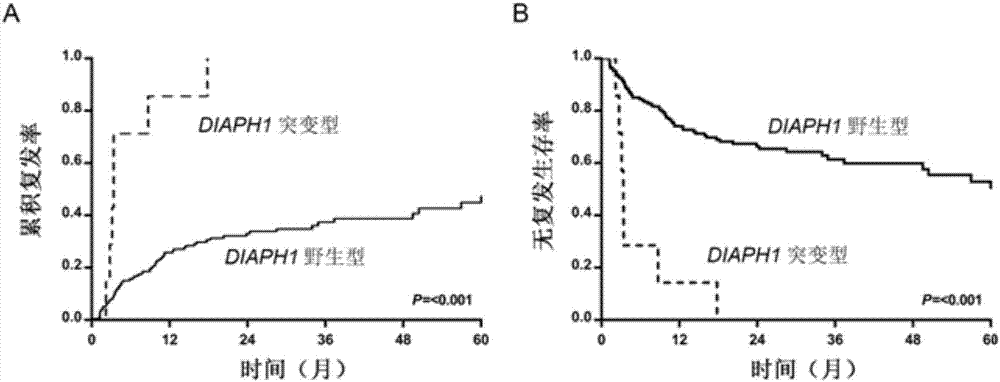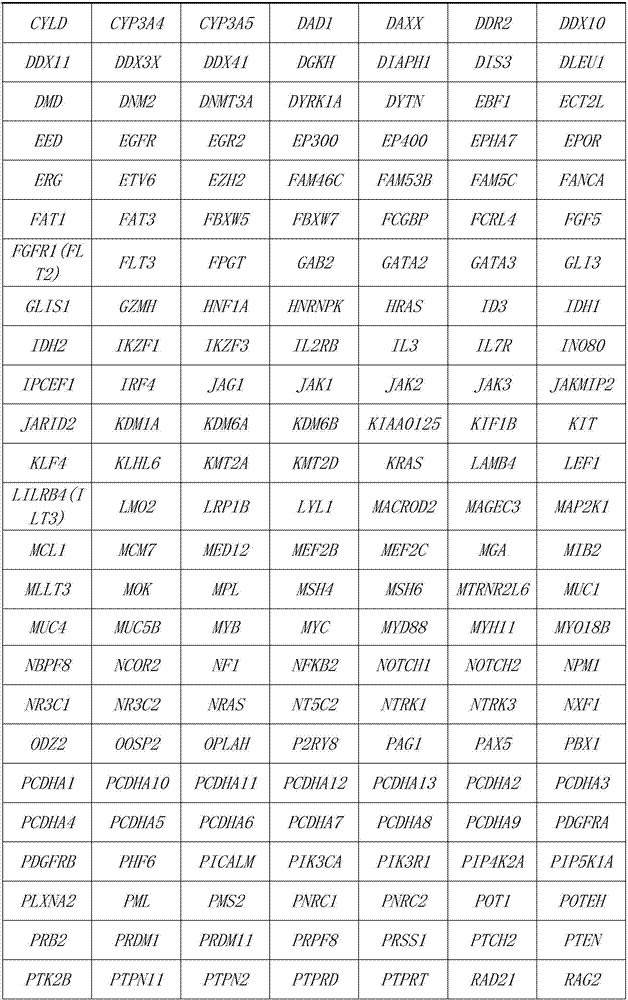Prognostic risk assessment marker for B-ALL (acute lymphoblastic leukemia) patient
A risk assessment and patient technology, applied in the direction of recombinant DNA technology, microbial measurement/testing, biochemical equipment and methods, etc., can solve problems such as patient recurrence
- Summary
- Abstract
- Description
- Claims
- Application Information
AI Technical Summary
Problems solved by technology
Method used
Image
Examples
Embodiment 1
[0054] Example 1. DIAPH1 gene mutation and B-ALL patient prognosis risk assessment
[0055] 1. Research object
[0056] A total of 226 patients with newly diagnosed B-ALL in Peking University People's Hospital from April 2007 to December 2015 were collected as the research group. Inclusion criteria: ① age ≥ 14 years old; ② meet the B-ALL standard diagnosis (refer to WHO classification criteria for precursor B and T cell tumors); ③ all newly diagnosed, without any relevant treatment. The patient or the patient's guardian (if the patient's age is <18 years old) signed the informed consent. This study was approved by the Medical Ethics Committee of Peking University People's Hospital and complied with the Declaration of Helsinki. The cut-off time for the observation of patients is April 30, 2016.
[0057] 2. Treatment plan
[0058] All patients received induction chemotherapy (1-2 courses in total), and if the patient achieved complete remission, 2 courses of consolidation ch...
PUM
 Login to View More
Login to View More Abstract
Description
Claims
Application Information
 Login to View More
Login to View More - R&D
- Intellectual Property
- Life Sciences
- Materials
- Tech Scout
- Unparalleled Data Quality
- Higher Quality Content
- 60% Fewer Hallucinations
Browse by: Latest US Patents, China's latest patents, Technical Efficacy Thesaurus, Application Domain, Technology Topic, Popular Technical Reports.
© 2025 PatSnap. All rights reserved.Legal|Privacy policy|Modern Slavery Act Transparency Statement|Sitemap|About US| Contact US: help@patsnap.com



